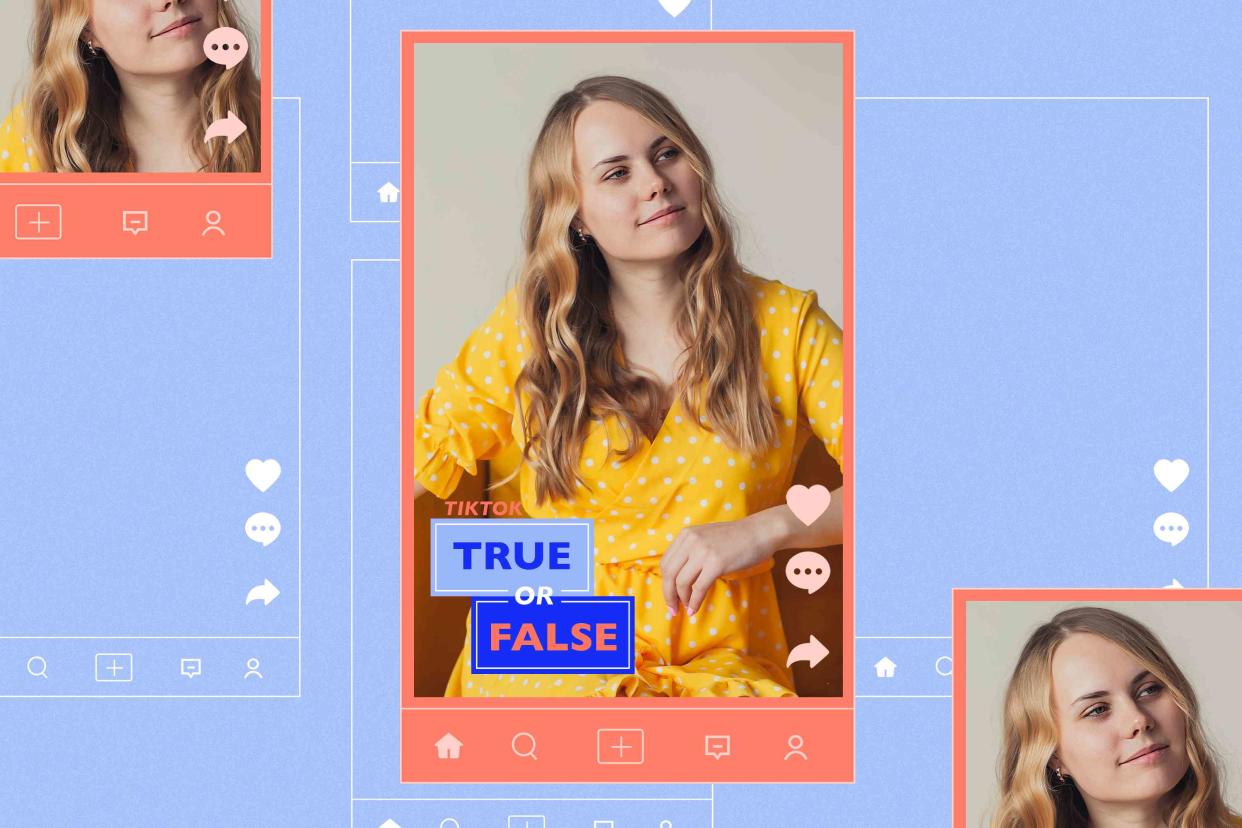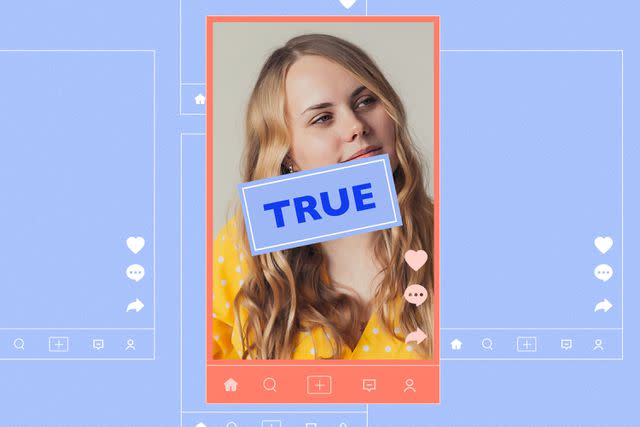Heatless Curls are a Tried and True TikTok Hair Hack, But Is It Really Better for Your Hair?

Getty Images
TikTok True or False is the answer to your burning questions about the health, beauty, and fitness fads taking over your social feeds. Each story breaks down a buzzy wellness trend with the help of experts and scientific research to uncover the truth and safety behind the viral "advice" you see online. You'll never have to wonder what's actually legit — or what to skip — again.
Another day, another new trendy hair styling technique floating all over the internet. #Heatlesscurls, which currently has over 5 Billion videos under the hashtag on TikTok, is the latest hair hack that everyone can't get enough of. With countless videos demonstrating effortless, bouncy curls achieved without a trace of heat (usually literally in one's sleep), the question on everyone's mind is, are heatless curls genuinely better for our hair? Before we dive in, let's begin by understanding the connection between heat styling and hair damage.
Popular for its quick results, traditional heat styling has always had a rocky relationship with hair health. Hot tools such as curling irons, flat irons, and heated rollers use high temperatures to alter the shape of the hair. Although great for styling, this process often leads to irreversible heat damage, dryness, breakage, and split ends over time. The potential harm stemming from heat styling is enough reason to leave people looking for better alternatives.
Enter the heatless curls method, promising luscious curls with minimal damage. It has opened up new possibilities for achieving Hollywood-worthy curls without resorting to potentially damaging heat tools. Let's break down the facts and fallacies of heatless curls.
What are Heatless Curls?
As previously mentioned, heatless curls are a styling technique that allows you to achieve curls or waves in your hair without heat. Instead of using hot tools, heatless curls involve using alternative methods such as braiding, flexi rods, a headband roller, or even everyday household items like socks to create these desired curls. On TikTok, folks often opt for the weird yet ethically appealing headband option.
According to celebrity hairstylist and master cosmetologist Tamika Gibson, the main benefit of using heatless vs. heat is that the former provides less hair shaft damage. In contrast, heat methods may cause damage further down the line. Brandi Voorhees, a stylist from Sharon Dorram Color at Sally Hershberger, NYC, agrees. "The main benefit to heatless curls is the overall health of your hair. Over time, hot tools can cause breakage, dryness, and damage," she adds. At a glance, heatless curls do seem to have some hair benefits to bring to the table.
Should Heatless Curls Be Done on Wet or Dry Hair?
While quickly scrolling through heatless curl videos on TikTok, you may notice that people have different ways of going about heatless curls, from the tools and techniques to hair prep for the curls. While Gibson recommends doing heatless curls on damp hair for tighter curls and dry hair for looser curls, Brandi leans towards doing heatless curls on damp hair entirely. "Heatless curls work best on damp hair and when left in overnight or until the hair is completely dry," explains Voorhees. Your hair drying into the curl typically gives a tighter, more defined look that holds longer. Gibson adds that applying a leave-in or hair mousse before doing your heatless curls is your best bet for more definition and hold.
It's also important to note that damp and soaking-wet hair is different. Leaving your hair soaking wet while you sleep has its own associated risks, such as causing the hair strands to soften, making them more prone to breakage while you sleep, Steven D. Shapiro, M.D., a board-certified dermatologist, previously told SHAPE.
Are There Any Drawbacks to Heatless Curls?
Despite their benefits, heatless curls have potential drawbacks. Gibson points out that the resulting curl pattern might not match that of heated curls, and applying them too tightly can lead to hair damage. Voorhees echoes the caution, saying, "Tension is something to be concerned about when doing heatless curls. You don't want them too tight where they are pulling. Especially when sleeping on them, as they can cause breakage and be very uncomfortable." With that said, if you're a wild sleeper, you may want to consider doing heatless curls when you can monitor how much tension they're causing on your hair.
Voorhess emphasizes another often overlooked drawback—time. "One of the biggest drawbacks of heatless curls is the time it takes to achieve your desired look. For best results, they should be done on damp hair and left in for 3-7 hours. The hair should be completely dry before taking out rod wavers, headband curlers, braids, etc., for the curls/waves to hold." If you're crunched for time or have low porosity hair that takes forever to dry, heatless curls may not be a time-efficient solution.
Heatless Curls Better For Your Hair Than Hot Tool Styling, True or False?

Getty Images
Regarding hair health, both Gibson and Voorhees agree that heatless curls are generally better than heat styling. Gibson asserts, "Using heat can cause damage since heat will penetrate the hair shaft. When the shaft is constantly penetrated, it removes the hair's natural oils that give the hair protection, leading to damage, especially over time." Voorhees concurs, adding, "Heatless curls are definitely the stronger option when it comes to the health of your hair. Although heat styling can be a quicker, more effective method, with continued use, it can damage the cuticle".
However, they both recognize that heatless curls are not a one-size-fits-all solution. Gibson notes that the curls may turn out looser for coarse or thick hair and suggests using smaller sections to achieve the desired curl pattern. An interesting caveat that both experts point out is that heatless curls can last longer in some cases, especially when the hair is prepped correctly with a styling/hold product such as mousse.
So, the verdict? Heatless curls can indeed be a healthier alternative to heat-styled curls, but success depends on various factors, including hair type, technique, and time investment. Like any hair trend, it's about finding what works best for you. So, why not try the heatless method and see the results yourself? Happy curling!
For more Shape news, make sure to sign up for our newsletter!
Read the original article on Shape.

